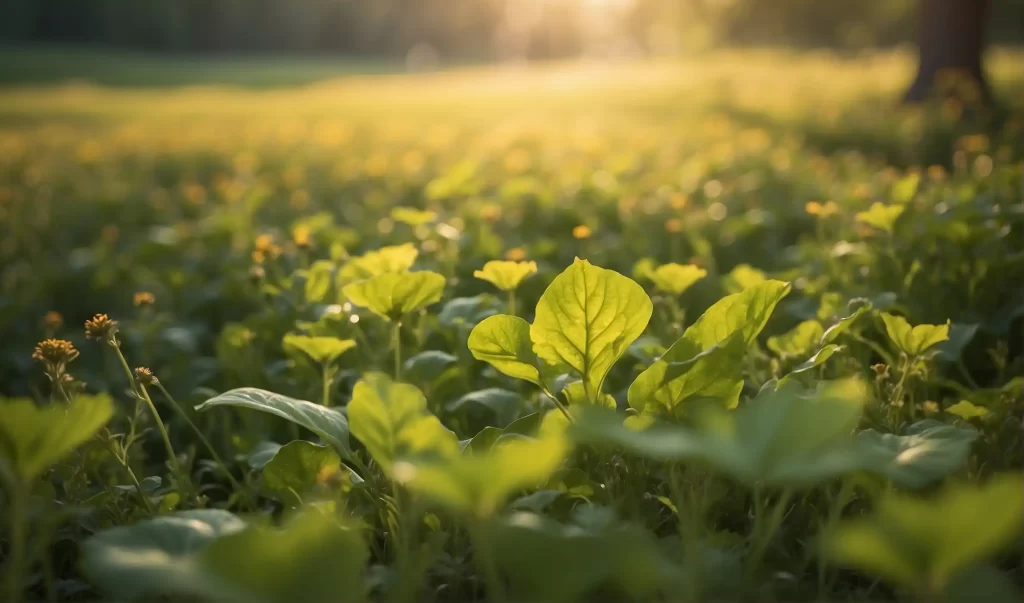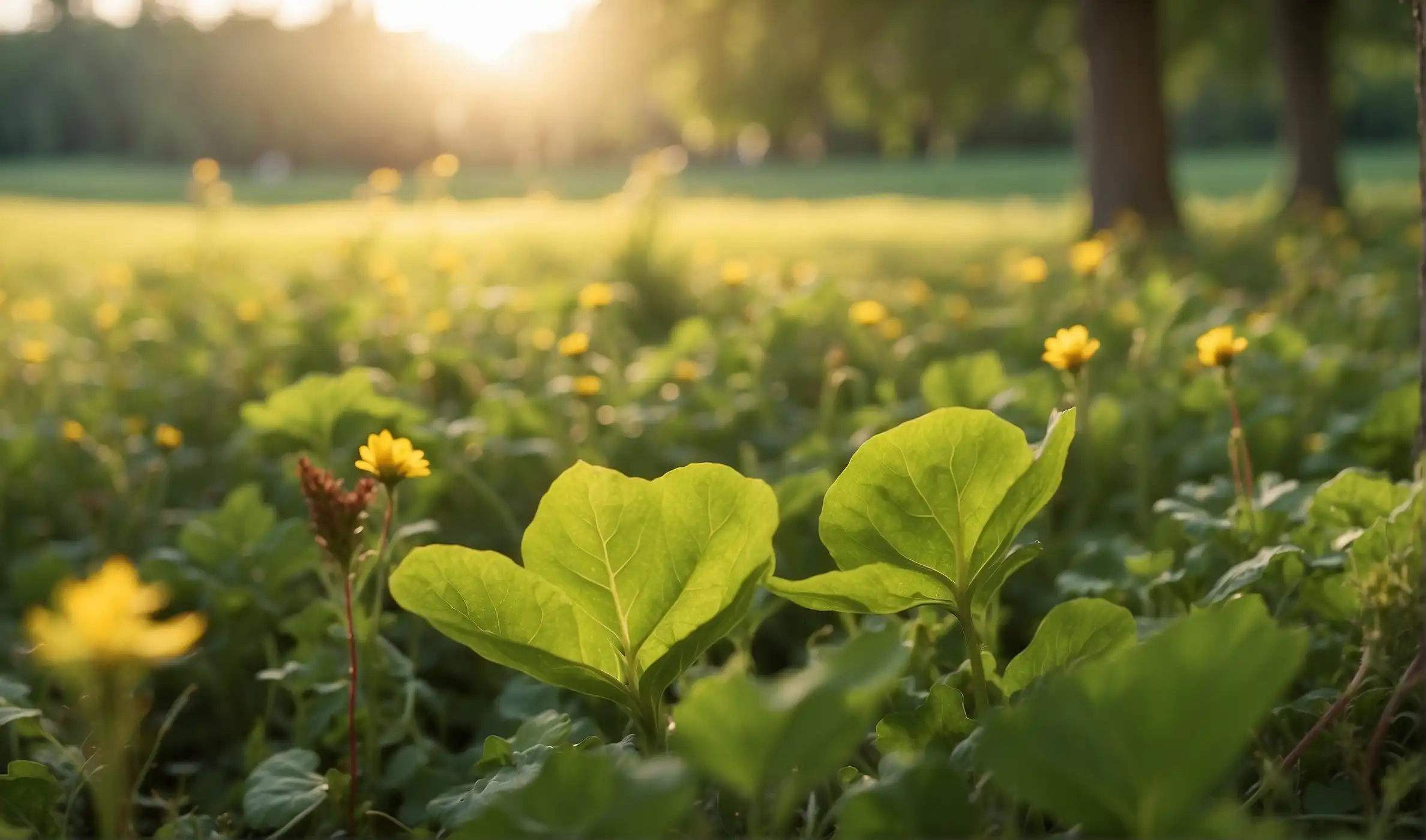Wild lettuce (Lactuca virosa) commonly grows along roadsides and in fields across North America and Europe. It can also be found in wastelands or areas with disturbed soil.
Wild lettuce, nature’s pain reliever, resembles a cross between a dandelion and thistle. This tall leafy plant has a reputation for its mild sedative and pain-relieving properties, making it a point of interest for natural remedy enthusiasts. Its milky sap distinguishes it from other weedy look-alikes.
Foragers and herbalists often seek out wild lettuce for its use in teas and extracts. Not to be confused with the lettuce in your salad, wild lettuce is not typically cultivated for consumption but rather grows as a hardy weed in suitable climates. Remember to identify it correctly, as it has some look-alikes that are not edible.
Discovering Wild Lettuce Locations
Foraging for wild lettuce is not only a way to reconnect with nature but also to tap into a source of natural, herbal remedies. Enthusiasts often seek out this plant for its mild sedative and pain-relieving properties. Sustainably gathering wild lettuce means taking only what you need and ensuring that you do not harm the plant’s habitat. Respect for the environment is paramount when foraging wild lettuce – it’s about both the benefits of the harvest and the preservation of natural ecosystems.
Individuals seeking to forage wild lettuce should adopt mindful harvesting techniques to maintain plant populations. This involves leaving enough plants behind for regeneration and being cautious not to disrupt surrounding wildlife. Through responsible practices, foragers can enjoy the bounties of wild lettuce without negatively impacting the species’ long-term survival in the wild.
Identifying Wild Lettuce Habitats
Wild lettuce thrives in a variety of natural environments, typically flourishing in regions that offer plenty of sunlight and well-drained soil. Often found in open woodlands and along paths and roadways, it is a plant that can adapt to a range of conditions, although it tends to avoid overly saturated grounds. It’s crucial for enthusiasts eager to spot wild lettuce to understand the plant’s preference for partial to full sun exposure, and areas that are not overly manicured or subject to heavy foot traffic.
To distinguish wild lettuce from similar plants, one of the key characteristics to look for is the milky sap that exudes when the plant’s stem or leaves are broken. This sap is indicative of the Lactuca virosa species, commonly referred to as wild lettuce. Moreover, its leaves are oblong and lobed, with small hairs along the veins on the underside, providing additional identification markers for this edible wild green.

Foraging Seasons For Wild Lettuce
For enthusiasts eager to harvest wild lettuce, understanding the foraging seasons is crucial. Spring and early fall present the best times to find this plant, as the cooler temperatures help maintain its potent properties. During the spring months, young leaves promise a more bitter flavor and higher concentrations of lactucarium, the sap-like substance widely recognized for its sedative and pain-relieving qualities.
The plant’s potency tends to diminish as the weather warms, leading to the best harvestsusually occurring before the summer heat sets in. Despite this, wild lettuce can still be found during summer, though with reduced medicinal strength. Foragers should aim for late fall for another chance to collect the plant while it maintains a desirable potency level, before the first frost hits.
Maps And Resources For Wild Lettuce
Finding wild lettuce can be simplified by embracing technology and community knowledge. Foraging apps such as Fallout Flora or Wild Edible provide GPS-based maps highlighting areas where wild lettuce is abundant. These digital resources often include photos and descriptions, aiding in accurate identification. Field guides are another essential tool, offering detailed information about various plant species, including wild lettuce. They often contain illustrations or photographs, habitat descriptions, and harvesting tips that are invaluable during forays into nature.
Engaging with local foraging communities offers firsthand experience and shared wisdom that apps and books may lack. Joining forums, attending workshops, and participating in guided walks can lead to discovering specific locations where wild lettuce grows. Experienced foragers frequently share their insights on the best times for harvesting and tender plant parts, enriching your foraging adventures.
Urban Foraging For Wild Lettuce
Wild lettuce, a plant heralded for its medicinal benefits, thrives in unexpected urban environments. Enthusiasts keen on urban foraging must pay attention to environmental cues to spot this elusive plant. Begin your quest by looking in abandoned lots, along fence lines, or in the shadows of buildings where the soil is undisturbed and biodiversity flourishes. It’s common to find wild lettuce sprouting in the cracks of sidewalks or at the edges of park paths, places often overlooked by city dwellers.
Foraging within the city’s embrace requires an understanding of local regulations. Ensure that you’re not trespassing on private property and confirm that foraging is allowed in public spaces. Some regions may demand a permit for plant collection, so due diligence is paramount. Remember, responsible foragers always prioritize sustainability by harvesting judiciously.
Wild Lettuce On Private Property
Seeking permission from landowners is crucial when foraging wild lettuce on private property. Always establish communication with the property owner, explicitly explaining your intent to forage. Gaining consent ensures legal and ethical collection of plants, and it helps maintain good relationships with the local community.
Following leave-no-trace principles is essential to preserving the natural environment. Be mindful to cause minimal disturbance to the habitat. Collect only what you need, avoid damaging plants or soil, and never leave behind waste. Through respectful foraging, the integrity of wild spaces is upheld for future generations.
Learn more: How Much Does a Head of Romaine Lettuce Weigh
Preserving Found Wild Lettuce
Preserving wild lettuce ensures its medicinal properties are maintained for future use. Proper techniques for drying are essential. First, clean the leaves thoroughly and discard any damaged parts. Lay them out in a single layer, ideally on a mesh screen in a well-ventilated, shady area. Drying could take several days, and it is crucial to turn the leaves regularly to prevent mold.
Once the wild lettuce is completely dry, store it in an air-tight container, and keep it in a cool, dark place to prevent degradation of its active compounds. For instance, use glass jars with tight-fitting lids and ensure they are properly labeled with the date of storage. Storing wild lettuce properly can significantly extend its shelf life and potency.
Growing Wild Lettuce At Home
Wild lettuce, known for its natural pain-relief properties, thrives in well-drained soil with full to partial sunlight. Begin your cultivation journey by selecting a suitable location in your garden. Prepare the soil by loosening it and enriching it with organic compost, ensuring optimal growing conditions.
Sow wild lettuce seeds directly into the prepared soil during early spring or fall. A light sprinkling of soil over the seeds suffices, as they need sunlight for germination. Keep the soil consistently moist but avoid overwatering to prevent root rot.
For a year-round supply, stagger your planting every 2-3 weeks. This process, known as succession planting, allows for continuous harvesting. During the colder months, consider transplanting a few plants indoors or using a cold frame to protect them from frost.
Also learn: How Many Ounces is a Head of Lettuce
FAQs Of Where To Find Wild Lettuce
What Is Wild Lettuce Used For?
Wild lettuce has traditionally been used as a mild sedative and pain reliever. People use it to tackle issues like anxiety, insomnia, restlessness and various types of pains.
How Do You Identify Wild Lettuce?
Wild lettuce can be identified by its tall stem, yellow-green flowers, and milky sap. Its leaves are lobed, coarse, and can reach up to a foot long, with a resemblance to dandelion leaves.
When Is The Best Time To Forage Wild Lettuce?
The best time to forage wild lettuce is during its flowering season in late spring to early summer. This is when the leaves are most tender and the sap concentration is high.
Can You Grow Wild Lettuce At Home?
Yes, you can grow wild lettuce at home if you have viable seeds and a sunny location. It can be grown in both gardens and containers, provided there’s enough soil depth for its taproot.
Conclusion
Exploring the habitats of wild lettuce leads to an adventurous forage. Gardens, fields, and roadsides can become treasure troves for this versatile plant. Remember to forage responsibly and identify correctly. Ready to enjoy nature’s bounty? Wild lettuce awaits your discovery, offering both culinary and medicinal benefits.
For more exploration into the world of wild plants and sustainable farming, keep updated with Farm Pioneer, your guide to nature’s secrets.
Embrace the hunt – the rewards are plentiful.
